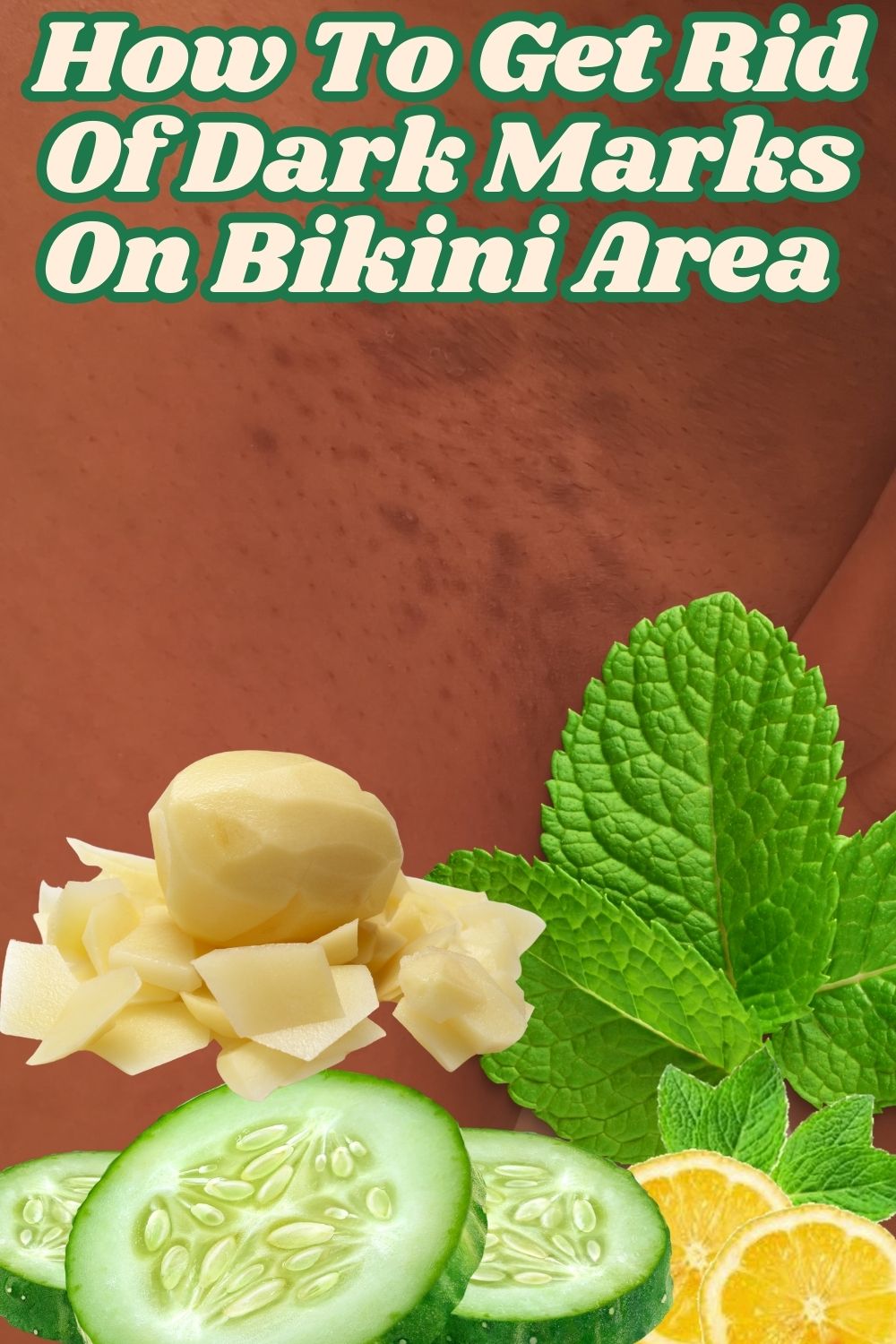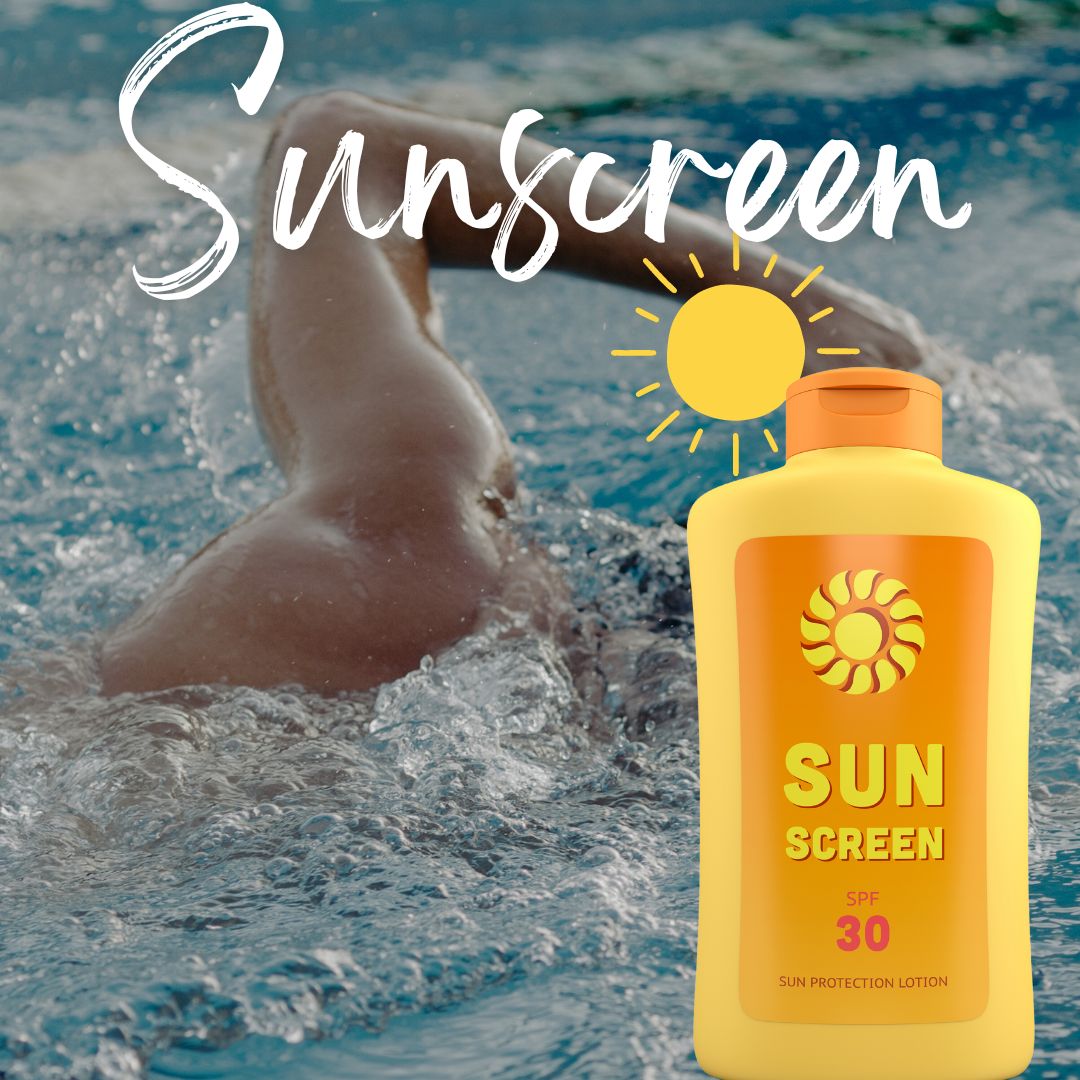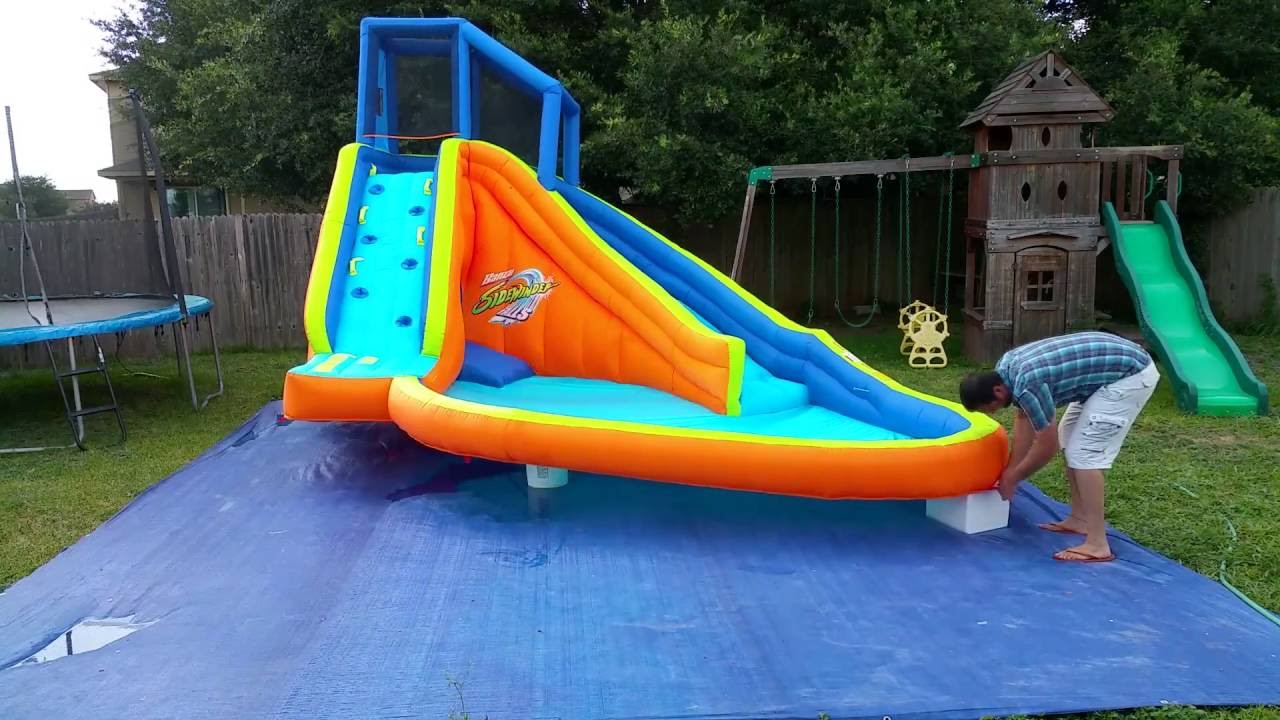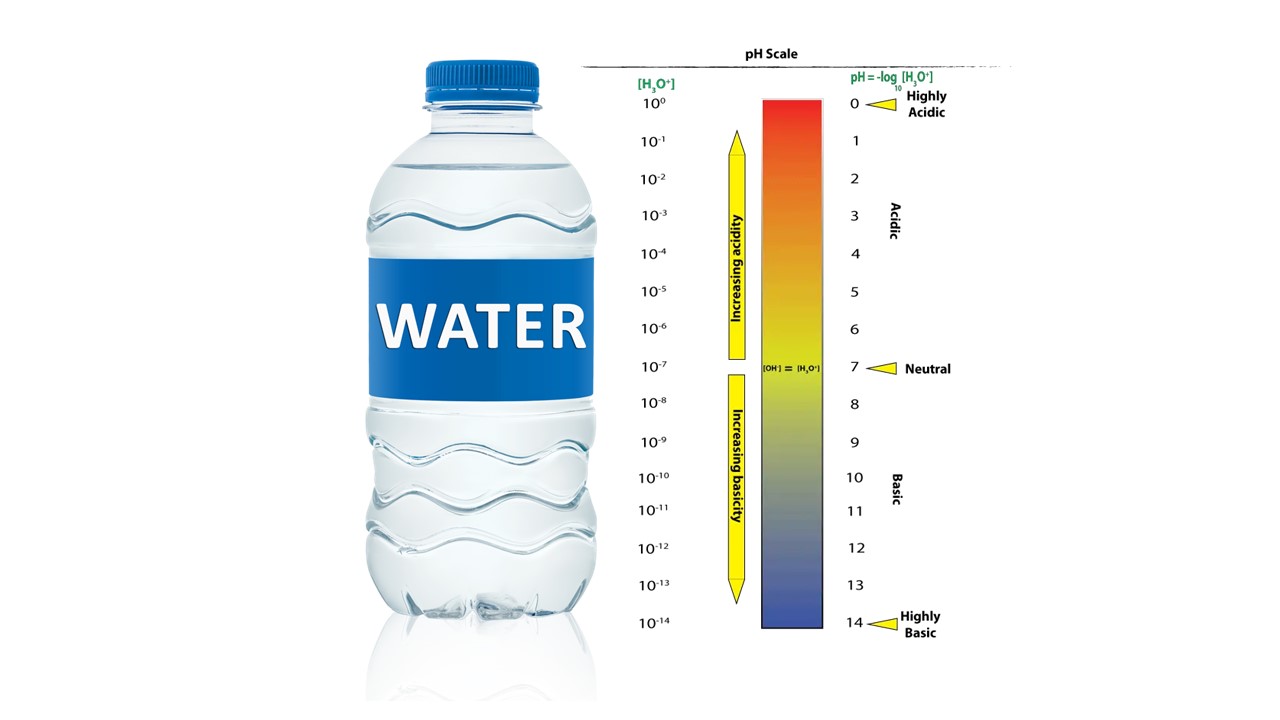How To Remove Water Spots – A Comprehensive Guide
Wondering how to remove water spots? Water spots, those pesky white or grayish blemishes that mar your car’s gleaming finish or your shower’s sparkling enclosure, can be a real downer. But fret not, for there are simple yet effective ways to banish these unsightly marks and restore your surfaces to their pristine glory.
Imagine this: you’ve just given your car a thorough wash and wax, only to find it marred by water spots as it dries under the sun. It’s like inviting guests over for a fancy dinner, only to discover that your prized silver cutlery is tarnished. Disheartening, to say the least.
This comprehensive guide will equip you with the knowledge and tools to tackle those pesky water spots and reclaim the sparkling surfaces you deserve. We’ll delve into the different types of water spots, their causes, and the most effective removal methods.
How To Remove Water Spots: Understanding Water Spots
Water spots, those elusive blemishes on our beloved surfaces, are the result of mineral deposits left behind when water evaporates. The primary culprits behind these spots are hard water and minerals such as calcium and magnesium.
Hard water, prevalent in many regions, contains an abundance of these minerals, which, when left to dry, create the telltale marks we know as water spots.
Common Causes Of Water Spot
- Hard Water: Water that contains high levels of minerals, especially calcium and magnesium, is classified as hard water. As it evaporates, these minerals are left behind, forming stubborn spots on surfaces.
- Mineral Deposits: Beyond hard water, other minerals present in the water supply can contribute to the formation of water spots. These deposits vary based on regional water compositions.
Types of Water Spots
- Calcium Deposits: Often the white, chalky spots seen on glass surfaces, caused by the buildup of calcium carbonate.
- Silica Water Spots: Silica, a common mineral, can create spots that are harder to remove and may appear as a hazy film on glass or ceramics.
- Soap Scum: Residue from soap and shampoos can combine with hard water minerals, forming cloudy spots on shower doors and tiles.
- Metal Oxide Stains: Water spots on metal surfaces, like stainless steel, can result from the oxidation of metals present in the water.
Understanding the different types of water spots is crucial for effective removal, as each may require a tailored approach to restore surfaces to their spotless glory.
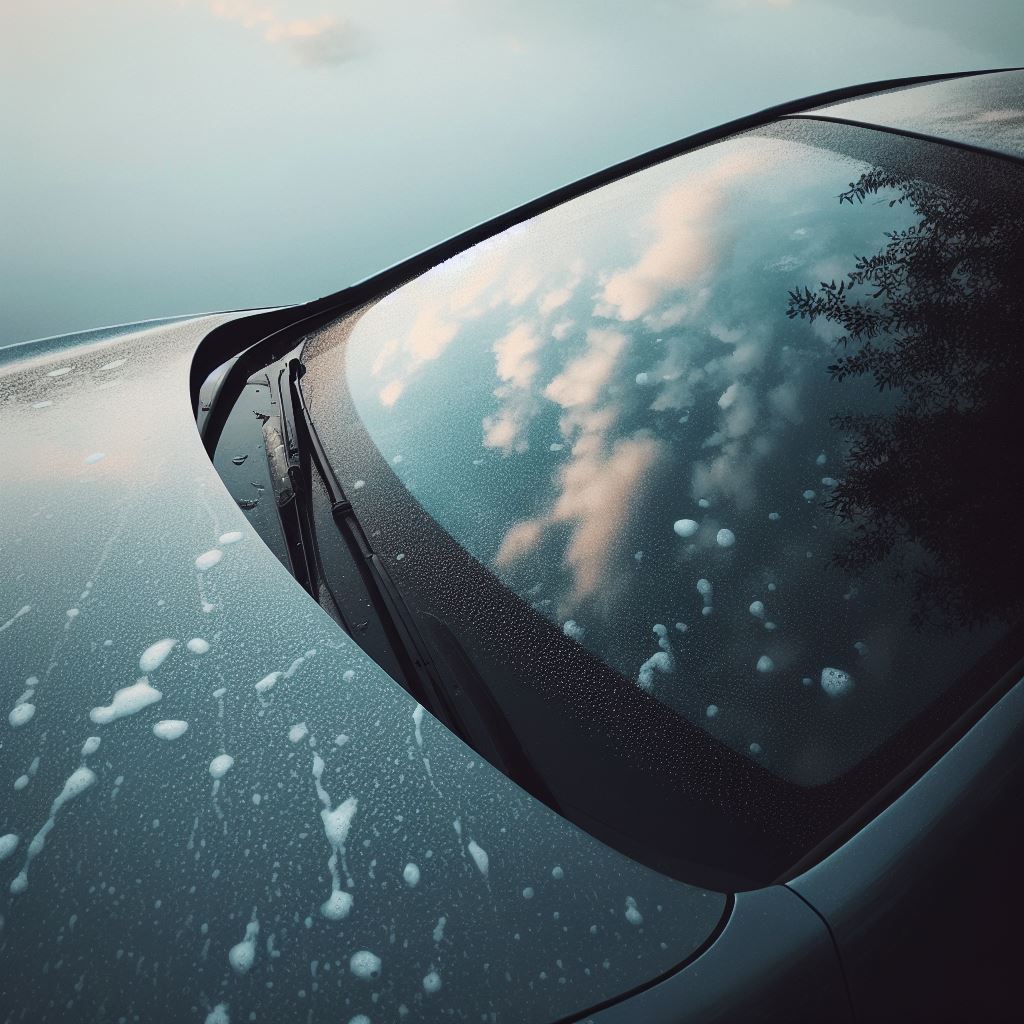
How To Remove Water Spots Top of Form
Embarking on a quest for spotless surfaces? Those stubborn water spots don’t stand a chance! In this concise guide, we unveil the secrets to vanquishing water spots on glass, metal, and beyond.
From calcium deposits to pesky silica water spots, we’ve curated step-by-step solutions to restore your surfaces to their sparkling best.
Say goodbye to the frustration of water spots and hello to a home that gleams with brilliance. Let’s dive into how to remove spot removal and reclaim the pristine beauty of your cherished spaces.
1. Removing Calcium Deposits
Materials Needed
Steps
- Mix equal parts white vinegar and water in a bowl.
- Soak a microfiber cloth or sponge in the solution.
- Gently rub the affected area with the soaked cloth, focusing on the calcium deposit.
- Let the solution sit for a few minutes to break down the deposit.
- Wipe the area clean with a damp cloth to remove any remaining residue.
2. Eliminating Silica Water Spots
Materials Needed
- Rubbing alcohol
- Distilled water
- Microfiber cloth
Steps
- Mix equal parts rubbing alcohol and distilled water.
- Dampen a microfiber cloth with the solution.
- Gently rub the silica water spots, applying slight pressure.
- Allow the solution to sit for a few minutes.
- Wipe the area clean with a dry microfiber cloth to remove any remaining residue.
3. Tackling Soap Scum
Materials Needed
- Baking soda
- White vinegar
- Lemon juice
- Scrub brush or sponge
Steps
- Sprinkle baking soda over the soap scum.
- Mix equal parts white vinegar and lemon juice in a bowl.
- Apply the mixture to the baking soda, creating a paste.
- Let the paste sit on the soap scum for 10-15 minutes.
- Scrub the area with a scrub brush or sponge.
- Rinse the surface thoroughly with water to remove any residue.
4. Handling Metal Oxide Stains
Materials Needed
- Commercial stainless steel cleaner
- Microfiber cloth
Steps
- Apply a small amount of the stainless steel cleaner to a microfiber cloth.
- Gently rub the metal oxide stains, following the grain of the metal.
- Buff the surface with a dry microfiber cloth to bring out the shine.
- For persistent stains, use a soft-bristle brush to scrub the area gently.
- Wipe away any remaining cleaner residue with a damp cloth.
These step-by-step methods are tailored to address specific types of water spots, ensuring an effective and targeted approach to spot removal on various surfaces. Always test the cleaning solution on a small, inconspicuous area first to ensure compatibility with the material.
Effects of Water Spots
Water spots, seemingly innocuous at first glance, can wield a detrimental impact on the aesthetic allure of various surfaces. The most immediate consequence is the visual impairment they inflict, diminishing the overall cleanliness and polish of glass, metal, and other materials.
The once-clear transparency of windows becomes clouded, and the reflective sheen of stainless steel dulls under the assault of these persistent marks.
However, the aesthetic downgrade is only the surface-level concern. If water spots are not promptly addressed, they have the potential to instigate more severe damage, particularly on delicate surfaces like glass.
Etching, a process where the minerals in water spots chemically react with the surface, can occur. Glass, in particular, is susceptible to this corrosive effect, resulting in permanent marks that compromise its transparency and smooth texture.
The longer water spots are allowed to linger, the greater the risk of irreversible damage, turning a once minor nuisance into a lasting blemish on your valued surfaces. It’s a call to action – timely removal is not just about restoring appearances but safeguarding the integrity of your cherished materials.
How To Identify Water Spots On Different Surfaces
Water spots, stealthy intruders on our surfaces, often require a keen eye for detection. To guide you through the process of identification, here’s a comprehensive guide on recognizing water spots on different surfaces and discerning their types.
1. Glass Surfaces
- Water spots on glass often appear as cloudy or hazy patches.
- Run your fingers over the surface; if you feel a rough texture, it might indicate the presence of mineral deposits.
2. Stainless Steel
- Look for dull or discolored spots on stainless steel appliances or fixtures.
- If the spots are hard to the touch, they may be mineral deposits.
3. Bathroom Tiles and Fixtures
- Soap scum water spots in the bathroom can manifest as filmy residues on tiles or fixtures.
- Use a damp cloth to wipe the suspected area; if it feels slippery or leaves a soapy residue on the cloth, it’s likely soap scum.
4. Car Windows
- Water spots on car windows can create irregular water patterns.
- If the spots persist even after washing, it may indicate mineral deposits.
Tips for Recognizing Types
1. Color and Texture
- Calcium Deposits: White, chalky spots that can feel gritty to the touch.
- Silica Water Spots: Often leave a hazy, hard-to-remove film on surfaces.
- Soap Scum: Cloudy spots with a slippery texture.
2. Location
- Calcium Deposits: Common on glassware, shower doors, and car windows.
- Silica Water Spots: Common on glass surfaces and ceramics.
- Soap Scum: Found in bathrooms on tiles, shower doors, and fixtures.
3. Persistence
- Calcium Deposits: May be challenging to remove with regular cleaning methods.
- Silica Water Spots: Tend to be more stubborn and resistant to typical cleaners.
- Soap Scum: Often requires specific cleaning agents to break down the soap residue.
By paying attention to these cues, you can become adept at identifying water spots and, more importantly, understanding the type of spot you’re dealing with.
Armed with this knowledge, you’ll be better prepared to choose the most effective removal methods for restoring the pristine beauty of your surfaces.
How To Remove Water Spots On Specific Surfaces
When it comes to battling water spots, one size does not fit all. Each surface demands a tailored approach to ensure effective removal without causing damage. Here’s your guide to surface-specific solutions, addressing concerns related to glass, stainless steel, tiles, and more:
1. How To Remove Water Spots From Glass Surfaces
Glass is susceptible to etching if not treated delicately.
Solution
- Mix equal parts white vinegar and water.
- Apply the solution using a soft cloth, rubbing gently to avoid scratches.
- Wipe away with a clean, dry cloth to prevent streaks.
2. How To Remove Water Spots From Stainless Steel
Abrasive cleaners can scratch and dull the finish.
Solution
- Use a commercial stainless steel cleaner or a mixture of mild dish soap and water.
- Apply with a soft cloth, following the grain of the steel.
- Buff with a dry microfiber cloth for a gleaming finish.
3. How To Remove Water Spots From Bathroom Tiles and Fixtures
Tile grout can trap soap scum, requiring extra attention.
Solution
- Create a paste with baking soda and water.
- Apply to the grout and affected areas, scrubbing gently with a brush.
- Rinse thoroughly to remove residue.
4. How To Remove Water Spots From Car Windows
Automotive glass may be exposed to harsher environmental elements.
Solution
- Use a vinegar-water solution or a commercial glass cleaner.
- Apply with a soft cloth or sponge, focusing on water spots.
- Wipe in a circular motion to prevent streaks.
5. How To Remove Water Spots From Marble or Granite
Acidic cleaners can damage natural stones.
Solution
- Mix a pH-neutral stone cleaner with water.
- Apply with a soft cloth, avoiding excessive pressure.
- Dry the surface thoroughly to prevent water spot recurrence.
6. How To Remove Water Spots From Chrome Fixtures
Chrome can be prone to scratching and discoloration.
Solution
- Create a mixture of white vinegar and water.
- Apply with a soft cloth, rubbing gently on water spots.
- Buff with a dry cloth to restore shine.
By tailoring your approach to each surface, you ensure not only the effective removal of water spots but also the preservation of the material’s integrity.
Remember to test any cleaning solution on a small, inconspicuous area first to ensure compatibility with the surface. With these surface-specific solutions, you’re equipped to reclaim the brilliance of every corner of your home.
The Best Commercial Cleaning Products To Clean Water Spots
When it comes to battling stubborn water spots, commercial cleaners offer a convenient and efficient solution. Here, we’ve curated a list of highly-regarded water spot removers, each praised for its effectiveness and unique features:
1. CLR Calcium, Lime & Rust Remover
Features
- Specifically formulated to tackle tough calcium, lime, and rust stains.
- Versatile – suitable for various surfaces including glass, metal, and tiles.
- Fast-acting formula for quick spot removal.
Positive Reviews
- Users commend its ability to dissolve tough deposits without damaging surfaces.
- Appreciated for its multipurpose application.
2. Bar Keepers Friend Cleanser
Features
- Gentle abrasive action for effective removal of mineral deposits.
- Suitable for stainless steel, glass, and ceramic surfaces.
- Non-bleach formula to prevent discoloration.
Positive Reviews
- Users praise its versatility and effectiveness on different materials.
- Well-regarded for its ability to restore shine without scratching.
3. Bio Clean Hard Water Stain Remover
Features
- Biodegradable and environmentally friendly formula.
- Ideal for glass, shower doors, and windows.
- Professional strength for tough water spots.
Positive Reviews
- Users appreciate its eco-friendly composition.
- Effective on long-standing water spots, making it a go-to for deep cleaning.
4. Rain-X Shower Door Water Repellent and Cleaner
Features
- Dual-action formula – cleans and prevents future water spots.
- Designed specifically for shower doors.
- Creates a protective barrier against water and soap scum.
Positive Reviews
- Users highlight its preventive capabilities, reducing the frequency of water spot recurrence.
- Easy application and long-lasting effects are frequently praised.
5. Weiman Stainless Steel Cleaner and Polish
Features
- Specifically formulated for stainless steel appliances.
- Non-abrasive, leaves a protective barrier to resist future spots.
- Enhances shine while removing water spots and fingerprints.
Positive Reviews
- Users commend its ability to restore stainless steel surfaces to a like-new condition.
- Leaves a streak-free, polished finish.
Before using any commercial product, it’s advisable to read and follow the manufacturer’s instructions carefully. Additionally, always test in an inconspicuous area to ensure compatibility with the surface.
With these highly-regarded water spot removers, you can confidently bid farewell to those pesky spots and welcome back the brilliance of your surfaces.
DIY Cleaning Solutions: Step-By-Step Instructions For Creating Homemade Cleaning Solutions For Water Spots
Here are step-by-step instructions for creating DIY cleaning solutions using common household ingredients like vinegar, lemon juice, and baking soda to remove water spots:
1. Vinegar and Water Solution
Ingredients
- White vinegar
- Water
Steps
- Mix equal parts white vinegar and water in a bowl or spray bottle.
- Apply the solution directly to the water spots on surfaces such as glass or stainless steel.
- Allow it to sit for a few minutes to break down the mineral deposits.
- Wipe the surface with a clean, damp cloth to remove the dissolved water spots.
- Dry the area thoroughly to prevent new spots from forming.
2. Lemon Juice and Baking Soda Paste
Ingredients
- Fresh lemon juice
- Baking soda
Steps
- Squeeze fresh lemon juice into a small bowl.
- Gradually add baking soda to the lemon juice, stirring until a thick paste forms.
- Apply the paste directly to the water spots, especially on surfaces like glass or tiles.
- Gently scrub the area with a sponge or soft brush, focusing on the spots.
- Let the paste sit for 10-15 minutes to allow the acid from the lemon and the abrasiveness of baking soda to work.
- Rinse the surface with water and wipe it dry with a clean cloth.
3. Baking Soda and Vinegar Spray
Ingredients
- Baking soda
- White vinegar
- Water
Steps
- Sprinkle baking soda directly onto the water spots.
- Mix equal parts white vinegar and water in a spray bottle.
- Spray the vinegar solution onto the baking soda-covered spots.
- Allow the fizzing reaction to occur, breaking down the water spots.
- Scrub the area gently with a sponge or brush.
- Wipe the surface clean with a damp cloth and dry thoroughly.
4. Club Soda Rinse
Ingredients
Steps
- Pour club soda directly onto the water spots.
- Let it sit for a few minutes to loosen the mineral deposits.
- Wipe the area with a clean, damp cloth to remove the water spots.
- Dry the surface completely to prevent new spots from forming.
These DIY cleaning solutions are effective and budget-friendly alternatives for removing water spots from various surfaces. Always test a small, inconspicuous area first, especially on delicate surfaces, to ensure compatibility and avoid any potential damage.
Proper Cleaning Techniques To Avoid Surface Damage When Cleaning Water Spots
Maintaining pristine surfaces requires not only effective cleaning but also a delicate touch to prevent unintended damage. Follow these proper cleaning techniques to safeguard your surfaces while effectively removing water spots:
1. Read Manufacturer Guidelines
Before cleaning, familiarize yourself with the manufacturer’s guidelines for the specific surface. This information often includes recommended cleaning agents and techniques to preserve the material.
2. Test in a Small Area
Why: Different surfaces react differently to cleaning agents. Testing in a small, inconspicuous area ensures compatibility and prevents potential damage.
How:
- Choose an inconspicuous spot on the surface.
- Apply a small amount of the cleaning solution.
- Wait for a few minutes and observe any adverse reactions.
- If the test area looks unaffected, proceed with confidence.
3. Use Soft Materials
Why: Abrasive materials can scratch and dull surfaces. Opt for soft materials to prevent unintended damage.
How:
- Use microfiber cloths, sponges, or soft-bristle brushes for cleaning.
- Avoid abrasive scouring pads or steel wool, especially on delicate surfaces.
4. Gentle Pressure
Why: Excessive pressure during cleaning can cause scratches or wear down the surface finish.
How:
- Apply gentle and even pressure while scrubbing or wiping.
- Allow the cleaning solution to do the work rather than relying on force.
5. Dilute Cleaning Solutions
Why: Strong, concentrated cleaning solutions may be harsh on surfaces.
How:
- Dilute cleaning agents according to recommended ratios.
- Avoid using undiluted solutions unless specified by the manufacturer.
6. Quick Removal of Cleaning Residue
Why: Allowing cleaning solutions to linger can lead to residue buildup, potentially causing damage over time.
How:
- Promptly wipe surfaces with a damp cloth after cleaning.
- Dry the area thoroughly to prevent water spots or residue.
7. Follow Natural Grain or Direction
Why: Following the natural grain or direction of a surface minimizes the risk of visible scratches.
How:
For surfaces like stainless steel or wood, wipe or scrub in the direction of the grain.
8. Use Recommended Cleaning Agents
Why: Some surfaces require specific cleaning agents for optimal results without damage.
How:
- Refer to manufacturer recommendations for suitable cleaning products.
- Avoid using harsh chemicals on surfaces that may be sensitive to them.
By incorporating these proper cleaning techniques, you not only enhance the effectiveness of your cleaning routine but also ensure the longevity and beauty of your surfaces.
Remember, a gentle approach coupled with the right cleaning methods goes a long way in preserving the integrity of your cherished materials.
RELATED: Is Water Polo The Hardest Sport – Let’s Unravel The Secrets Together!
Regular Maintenance Tips: Preventing Water Spot Build-Up
Keeping surfaces free from water spots involves consistent care and attention. Follow these routine cleaning schedules and long-term maintenance tips to minimize the occurrence of water spots and maintain the brilliance of your surfaces:
1. Establish a Regular Cleaning Schedule
Why: Consistency is key to preventing water spots from becoming stubborn stains.
How:
- Schedule regular cleaning sessions based on the usage and exposure of each surface.
- High-traffic areas may require more frequent cleaning.
2. Wipe Surfaces After Use
Why: Immediate attention prevents water spots from forming as water evaporates.
How:
- Keep a microfiber cloth or sponge handy.
- Wipe down surfaces, especially in bathrooms and kitchens, after each use.
3. Use Water-Repellent Treatments
Why: Water-repellent coatings create a protective barrier against water spots.
How:
- Apply water repellents designed for specific surfaces, such as glass or shower doors.
- Follow manufacturer instructions for application and reapplication.
4. Invest in Quality Squeegees
Why: Squeegees efficiently remove water from surfaces, minimizing the chance of water spot formation.
How:
- Keep a squeegee in the shower for daily use on glass doors and tiles.
- Use a squeegee on car windows after washing.
5. Dry Surfaces Thoroughly
Why: Complete drying prevents residual water from leaving spots.
How:
- After cleaning or wiping surfaces, ensure they are thoroughly dry.
- Use a dry, clean cloth to remove any remaining moisture.
6. Monitor Water Quality
Why: Hard water exacerbates water spot issues. Address water quality to prevent mineral deposits.
How:
- Consider water softeners if your water supply has high mineral content.
- Use filtered water for plants, as water spot residue can harm them over time.
7. Clean and Inspect Regularly
Why: Regular inspection allows for the early detection and treatment of potential water spot areas.
How:
- Include a thorough inspection during routine cleaning sessions.
- Address any emerging spots promptly using appropriate cleaning methods.
8. Avoid Air-Drying
Why: Air-drying can lead to water spot formation, especially on glassware and stainless steel.
How:
Towel-dry items like glassware, silverware, and stainless steel appliances after washing.
9. Consider Protective Coatings
Why: Specialty coatings can provide long-term protection against water spots.
How:
- Explore products like ceramic coatings for car surfaces.
- Follow application guidelines for optimal effectiveness.
By incorporating these regular maintenance tips into your cleaning routine, you’ll create a proactive defense against water spots, preserving the beauty of your surfaces and ensuring they remain spot-free in the long term.
Removing Hard Water Stains From Glass
Removing hard water stains from glass can be accomplished with a few simple household items. Here’s a step-by-step guide to help you effectively tackle hard water stains on glass surfaces:
Materials Needed
- White vinegar
- Baking soda
- Lemon
- Microfiber cloth or sponge
- Distilled water
- Soft-bristle brush (optional)
- Rubber gloves (optional)
Steps
1. Create a Vinegar Solution
Mix equal parts white vinegar and distilled water in a bowl or spray bottle. The acidity of vinegar helps dissolve mineral deposits from hard water.
2. Apply the Vinegar Solution
Spray or apply the vinegar solution directly onto the hard water stains on the glass. Ensure the affected areas are thoroughly saturated.
3. Let it Sit
Allow the vinegar solution to sit on the stains for at least 5 to 10 minutes. For more stubborn stains, you can leave it for a longer duration.
4. Scrub with Baking Soda
Sprinkle a small amount of baking soda onto the stains. Baking soda is mildly abrasive and helps in scrubbing away the loosened mineral deposits.
5. Scrub Gently
Use a microfiber cloth or a soft-bristle brush to gently scrub the stains. Be cautious not to scratch the glass. For intricate or hard-to-reach areas, an old toothbrush can be effective.
6. Lemon Juice Option
If you have lemon available, you can cut a lemon in half and rub it directly on the stains. The citric acid in lemon can aid in breaking down mineral deposits.
7. Rinse with Water
Thoroughly rinse the glass with clean water to remove the vinegar, baking soda, and any dissolved mineral deposits.
8. Dry the Glass
Wipe the glass dry with a clean, dry microfiber cloth to prevent new water spots from forming during the drying process.
9. Repeat if Necessary
For severe hard water stains, you may need to repeat the process until the stains are completely removed. Patience and persistence can be key.
10. Prevent Future Stains
Consider using water repellents or specialty glass coatings to minimize the recurrence of hard water stains. Regular cleaning and prompt drying also help in preventing new stains.

Water Spots On Car Won’t Come Off
Persistent water spots on a car can be stubborn, but there are several methods you can try to remove them effectively. Here’s a step-by-step guide:
Materials Needed
- White vinegar or a specialized water spot remover for cars.
- Distilled water.
- Microfiber towels or a soft sponge.
- Car wax or polish (optional).
Steps
1. Wash the Car
Start by washing the entire car with a gentle car wash soap to remove loose dirt and contaminants.
2. Vinegar Solution
Mix a solution of equal parts white vinegar and distilled water in a bucket.
3. Apply the Vinegar Solution
Apply the vinegar solution directly to the water spots on the car’s surface. Ensure the affected areas are well-saturated.
4. Let it Soak
Allow the vinegar solution to sit on the water spots for a few minutes. The acidity helps break down mineral deposits.
5. Scrub Gently
Use a soft sponge or a microfiber towel to gently scrub the water spots. Avoid using abrasive materials that could scratch the paint.
6. Rinse Thoroughly
Rinse the car thoroughly with clean water to remove the vinegar solution and dissolved mineral deposits.
7. Dry the Car
Wipe the car dry with a clean, soft microfiber towel to prevent new water spots from forming during the drying process.
8. Check for Residue
Inspect the car for any remaining water spots. If some spots persist, you may need to repeat the process or try an alternative method.
9. Specialized Water Spot Removers
Consider using a specialized water spot remover formulated for cars. Follow the product’s instructions for application.
10. Apply Car Wax or Polish (Optional):
After removing the water spots, consider applying a coat of car wax or polish to protect the paint and enhance its shine.
How To Remove Water Spots On Car
Removing water spots from a car requires a careful and thorough approach to prevent damage to the paint. Here’s a step-by-step guide:
Materials Needed
- Distilled white vinegar or a specialized water spot remover for cars.
- Clean microfiber towels.
- Car wash soap.
- Car wax or polish (optional).
Steps
1. Wash the Car
Start by washing the entire car with a high-quality car wash soap. Use a sponge or microfiber wash mitt to remove dirt and contaminants.
2. Inspect for Water Spots
After washing, carefully inspect the car for water spots. Identify the areas where water spots are most prevalent.
3. Vinegar Solution or Water Spot Remover
Vinegar Solution
- Mix a solution of equal parts distilled white vinegar and water in a bucket.
- Apply the solution to the water spots using a clean microfiber towel.
- Allow it to sit for a few minutes to break down the mineral deposits.
- Gently rub the spots with the towel.
- Rinse the area with clean water.
Water Spot Remover
- Follow the instructions on the water spot remover product.
- Typically, you’ll apply the remover to a clean, dry surface, let it sit for a specified time, and then wipe or rinse it off.
4. Dry the Car
Thoroughly dry the car using a clean microfiber towel. Ensure no water spots remain after drying.
5. Check for Residue
Inspect the areas where water spots were present to ensure that the vinegar solution or water spot remover did not leave any residue.
6. Apply Car Wax or Polish (Optional)
For added protection and to enhance the car’s shine, consider applying a layer of car wax or polish.
How To Remove Water Spots From Shower
Removing water spots from a shower can be achieved using common household items. Here’s a step-by-step guide to help you effectively tackle water spots in your shower:
Materials Needed
- White vinegar
- Baking soda
- Lemon
- Microfiber cloth or sponge
- Distilled water
- Soft-bristle brush (optional)
Steps
1. Create a Vinegar Solution
Mix equal parts white vinegar and distilled water in a bowl or spray bottle. The acidity of vinegar helps dissolve mineral deposits from hard water.
2. Apply the Vinegar Solution
Spray or apply the vinegar solution directly onto the water spots in your shower. Focus on areas with visible stains.
3. Let it Sit
Allow the vinegar solution to sit on the water spots for at least 5 to 10 minutes. This gives it time to break down the mineral deposits.
4. Scrub with Baking Soda
Sprinkle a small amount of baking soda onto a damp microfiber cloth or sponge. Baking soda’s mild abrasiveness helps scrub away loosened deposits.
5. Scrub Gently
Use the cloth or sponge to gently scrub the water spots. For tougher spots, you can use a soft-bristle brush, especially in grout lines or textured surfaces.
6. Rinse Thoroughly
Rinse the shower surfaces with clean water to remove the vinegar and baking soda residue. This step is crucial to prevent any remaining residue from causing irritation to the skin.
7. Lemon Juice Option
If you have a lemon available, cut it in half and rub it directly on the water spots. The citric acid in lemon can help break down mineral deposits and leave a fresh scent.
8. Dry Surfaces
Wipe the shower surfaces dry with a clean, dry microfiber cloth to prevent new water spots from forming during the drying process.
9. Check for Remaining Spots
Inspect the shower surfaces to ensure that the water spots have been effectively removed. Repeat the process if needed.
How To Remove Water Spots From Car Glass
Removing water spots from car glass involves a few simple steps. Here’s a guide to help you effectively tackle water spots on your car’s windows:
Materials Needed
- White vinegar
- Distilled water
- Microfiber towels
- Glass cleaner (optional)
Steps
1. Wash the Car
Start by washing the entire car, including the glass, with a mild car wash soap to remove loose dirt and contaminants.
2. Create a Vinegar Solution
Mix equal parts white vinegar and distilled water in a spray bottle. This solution will help break down mineral deposits in the water spots.
3. Apply the Vinegar Solution
Spray the vinegar solution directly onto the water spots on the car glass. Ensure that the affected areas are well-saturated.
4. Let it Sit
Allow the vinegar solution to sit on the water spots for a few minutes. This gives it time to dissolve the mineral deposits.
5. Wipe with a Microfiber Towel
Use a clean, dry microfiber towel to gently wipe away the vinegar solution and dissolved mineral deposits. Make sure to use a soft, non-abrasive cloth to avoid scratching the glass.
6. Repeat if Necessary
For stubborn water spots, you may need to repeat the process. If the spots persist, consider using a slightly more concentrated vinegar solution.
7. Glass Cleaner (Optional)
If desired, you can follow up with a high-quality glass cleaner to ensure a streak-free finish. Spray the cleaner on the glass and wipe it away with a clean microfiber towel.
8. Dry the Glass
Thoroughly dry the car glass with a clean, dry microfiber towel. This helps prevent new water spots from forming during the drying process.
Vinegar Not Removing Hard Water Stains
If vinegar alone is not effectively removing hard water stains, you may need to try a different approach or use a more concentrated solution. Here are some alternative methods you can try:
Increase Vinegar Concentration
Mix a more concentrated solution of vinegar and water, using a higher ratio of vinegar to water. You can try using undiluted vinegar for more stubborn stains.
Vinegar and Baking Soda Paste
Create a paste by mixing baking soda with vinegar. Apply the paste to the hard water stains, let it sit for about 15 minutes, and then scrub the area with a soft brush or sponge.
Commercial Hard Water Stain Removers
Consider using a commercial hard water stain remover specifically designed for the type of surface you’re cleaning. Follow the product’s instructions carefully.
Lemon Juice
Substitute lemon juice for vinegar. The citric acid in lemon can also be effective against hard water stains. Apply lemon juice directly to the stains, let it sit, and then scrub and rinse.
Steel Wool or Razor Blade (Caution)
For glass surfaces, you can use fine steel wool or a razor blade (carefully) to gently scrape away the stains. This method requires caution to avoid scratching the glass.
Water Spot Remover for Cars
If you’re dealing with hard water stains on your car, consider using a water spot remover designed specifically for automotive surfaces. Follow the product’s instructions.
Professional Cleaning Services
For particularly stubborn stains or if you’re unsure about the best method, consider consulting with professional cleaning services or detailing services.
How To Remove Water Stains From Fabric
Removing water stains from fabric can be a delicate process, as it depends on the type of fabric and the cause of the water stain. Here are some general steps you can follow:
Materials Needed
- Clean, white cloth or sponge
- Distilled water
- White vinegar
- Mild dish soap
- Clean, dry towels
Steps
1. Blot the Stain
If the water stain is fresh, start by blotting the excess water with a clean, dry cloth or paper towel. Press the cloth onto the stain gently without rubbing.
2. Test in an Inconspicuous Area
Before applying any cleaning solution, test it in an inconspicuous area of the fabric to ensure it doesn’t cause discoloration or damage.
3. Distilled Water
- Dampen a clean, white cloth or sponge with distilled water.
- Blot the water stain from the outside toward the center to prevent spreading.
4. Vinegar Solution
- If plain water doesn’t work, mix a solution of equal parts white vinegar and distilled water.
- Dampen a cloth with the vinegar solution and blot the water stain.
- Continue blotting until the stain is lifted.
5. Mild Dish Soap
- If the stain persists, mix a small amount of mild dish soap with water.
- Dampen a cloth with the soapy solution and blot the stain.
- Again, blot from the outside toward the center.
6. Rinse with Water
Rinse the area by blotting with a clean cloth dampened with plain distilled water to remove any residual cleaning solution.
7. Dry the Fabric
- Blot the treated area with clean, dry towels to remove excess moisture.
- Allow the fabric to air dry completely.
Tips
- Always check the care label on the fabric for specific cleaning instructions.
- Avoid using hot water, as it can set some stains.
- For delicate fabrics or if you’re unsure about the fabric type, consider consulting a professional cleaner.
Special Consideration for Certain Fabrics
Silk
- Silk is delicate, so it’s crucial to be gentle.
- Blot water stains with a clean, dry cloth.
- Consult a professional cleaner for more stubborn stains.
Wool
- Blot excess water with a clean, dry cloth.
- Mix a solution of cool water and a small amount of white vinegar.
- Dab the water stain with the solution, then blot with a dry cloth.
Cotton or Polyester
- These fabrics are more durable.
- You can follow the general steps mentioned above using water, vinegar, and mild soap.
Always follow care label instructions and exercise caution, especially with delicate fabrics. If the water stain persists or if you’re dealing with a valuable or sentimental item, consider seeking professional help.
The Bottom Line On How To Remove Water Spots
Mastering the art of “How To Remove Water Spots” unveils a world of pristine surfaces and renewed brilliance. Armed with the right knowledge and effective techniques, bidding farewell to stubborn water spots becomes a straightforward endeavor.
Whether it’s your car’s gleaming finish, your shower’s glass clarity, or cherished fabrics, the key lies in a strategic approach and the right tools. So, embark on your spot-free journey, restoring shine and vitality to every corner of your living spaces. Your surfaces will thank you with a radiant, spotless glow.
